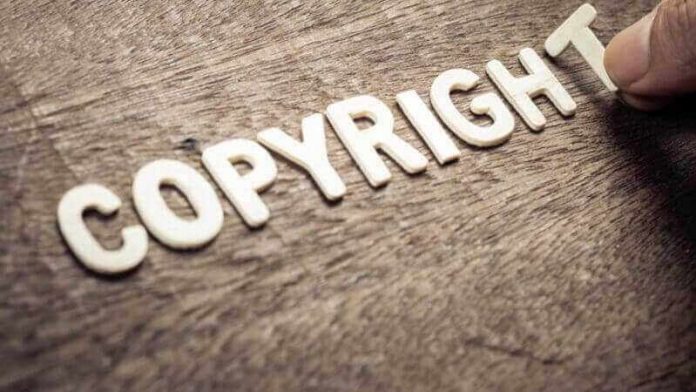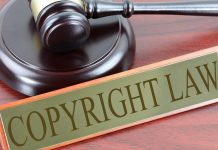This article has been written by Dr Mathivanan Dakshinamoorthi. This article has been edited by Ruchika Mohapatra (Associate, Lawsikho).
Table of Contents
Introduction
On 01 September 2021, the Madras HC interpreted the word ‘First owner’ of sound recording differently in Mrs Sellappappa Keeran v S.Vijayaraghavan (can be accessed here using case number 241 of 2004). The combined reading of Section 2(d)(v) and Section 17 of the Copyright Act (hereinafter, the Act) makes the producer of the sound recording the owner. However, the Court conferred the ownership to the Plaintiff. Could it be because there was no assignment deed in writing? Yes. But not entirely correct. The present work analyses the Court’s decision and interpretation of the “first owner” of sound recording.
Background
Mrs Sellapappa Keeran (Plaintiff) sued S Vijayaraghavan and Vani Recording Company (Defendant) to declare her copyright ownership in her husband’s sound recordings. Plaintiff’s husband, Pulavar Keeran, a Tamil scholar known for his discourses, gave sermons on varied topics during the period between 1960 and 1990. Defendant’s company made numerous recordings of his speeches and offered those recordings for sale. After the demise of Pulavar Keeran, a copyright ownership dispute arose. Plaintiff alleges that Pulavar Keeran commissioned the sound recording of his speeches and allowed the Defendant to market the same and to set off the recording expenses through the sale proceeds. Therefore, the Plaintiff claimed the copyright as author and owner. Defendant denied whatever was claimed by the Plaintiff and made a counterclaim that he engaged Pulavar Keeran by paying a sum of money for every recording and produced those recordings. Hence, he is the author and the owner of the sound recording per the provisions of the Copyright Act. Therefore, the predominant issue before the Court was about authorship and ownership of the sound recording. From the copyright’s angle, an audio recording is a sound recording per Section 2(xx) of the Act. Section 2(d)(v) provides that the author of a sound recording is the producer. Based on these definitions, other provisions of the Act shall be interpreted. Section 17 of the Act states that the author of the work shall be the first owner. The (a), (b) and (c) provisos to Section 17 of the Act govern contrary to this position. It was not established during the hearing who approached whom to produce and commission the sound recordings. However, it was not denied that the recordings were made using the infrastructures of Defendant, and Pulavar Keeran did not make any payment to Defendant. Moreover, the master records were in possession with Defendant, and it was claimed that they are holding it as the producer.
Court’s rationale
The Court has completely ignored all those transactions between the parties and raised the issue, in Para 12.1, as follows :
“… In order to ascertain the scope of the rights based on the rival claims, it has to be first decided as to who is the author of the work concerned, whether it is Pulavar Keeran as the author of the original literary work or the first Defendant as the produce of the sound recording.
Once the above question is answered then the rights will automatically flow under Section 13, and 17 of the Act.”
Instead of establishing who the author was, the Court initiated the discussions on the scope of Section 17 of the Act. It is to be noted that the Marginal title of Section 17 is First Owner of Copyright and in no way concerns with the declaration of authorship.
The Court has proceeded and opined in Para 12.3 that:
“… Proviso (a) and (b) of Section 17 will not apply to the case on hand, as it is not the case on either of the parties that the recording were made for the purposes of publication in any newspaper or magazine in the course of employment of Pulavar Keeran with such newspaper or magazine. Clause (b) of the proviso to Section 17 will not also apply as it does not relate to a literary work.”
Therefore, the Court deemed it fit to apply Proviso (c) of Section 17 of the Act to find out the author. The Court had looked into the possible existence of an employer-employee relationship between the Plaintiff and the Defendant, and none was found. Therefore, the Court has decided that Pulavar Keeran was the author of the work and proceeded as follows (Para 12.5):
“…Once it is conceded that the recordings were made by Pulavar Keeran, he would automatically become the author of the work and the first Copyright would vest with him or his legal heirs…”
Finally, the Court has declared that the plaintiffs are the author, and therefore they are the first owners of the copyright in the sound recordings.
With regards to the second issue, the Court had raised the issue of assignment favouring the Defendant over Pulavar Keeran. However, there was no underlying literary work in the fixed form to assign. On the other hand, the Defendants contended that they were the producers; hence there was no need for any assignment. For want of assignment in writing, in favour of Defendant, the Court has held the second issue also against the Defendant
Analysis of the judgment
The Court had discussed Indian Performing Right Society Ltd v. Eastern Indian Motion Pictures Association and Ors. In this case, it was held that the cinematographic film producer is the first copyright owner as envisioned in Proviso (b) and (c) of Section 17 of the Act in the absence of a contract to the contrary. This citation lends precedence to the producer as the author and owner of the cinematographic film, including sound recording. The authors of the underlying works were denied ownership for want of contract to the contrary per Section 17. However, the Court discussed this case but failed to establish any relevance to the issues at its hand.
The Court had also discussed MRF Tyres v Metro Tyres Ltd ( The Court had cited some findings of this case. Specifically, certain parts to which the author of the particular work would be entitled to a copyright in a cinematographic film. However, the relevancy of this citation is also unclear to the issues raised before the Court.
Further, the Court had also discussed Agi Music v Ilaiyaraja. In Agi Music v Illayaraja, the Court has distinguished cinematographic film, sound recordings and musical works (See Para 37). However, the Court has conferred ownership on the producers.
Therefore, nothing in the three cited cases gave any force to Plaintiff’s ownership of sound recordings. Factually, the recordings were made at the Defendant’s theatre. The defendants organised the recording and produced the records, using their infrastructure and their engineers. The masters were in their possession. Furthermore, they have made copies of the cassettes for sale. Some of which was offered for sale through the author. All these facts were ignored while reaching a decision in the judgement. On the question of law, one wonders the applicability of Section 17 to decide on the author. Some would raise that Performer’s right under Section 38 may come to the rescue of the Plaintiff to lend some force to their claims. However, it is a derivative right. Still, the question of who is the first author and owner has to be answered.
Conclusion
Mrs Sellappapa Keeran v S.Vijayaraghavan, decided by Madras High Court, raises two questions:
Firstly, what will be the test to decide the first owner in composite works like sound recordings and cinematographic films, if none of them has anything in writing to prove their ownership? Secondly, can Section 17 of the Act, having its marginal title “First owner of copyright”, be extended to decide authorship? If so, under what circumstances? The Court, as it appears, did not substantiate its rationale enough to offer the ownership of Plaintiff . The provisions of Law did not favour the same, and the cited precedents neither offered any justifications. Therefore, it requires to be challenged for better clarity.
Students of Lawsikho courses regularly produce writing assignments and work on practical exercises as a part of their coursework and develop themselves in real-life practical skills.
LawSikho has created a telegram group for exchanging legal knowledge, referrals, and various opportunities. You can click on this link and join:https://t.me/joinchat/J_0YrBa4IBSHdpuTfQO_sA
Follow us on Instagram and subscribe to our YouTube channel for more amazing legal content.












